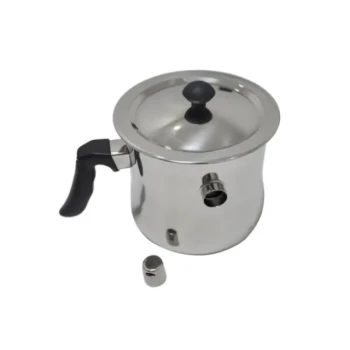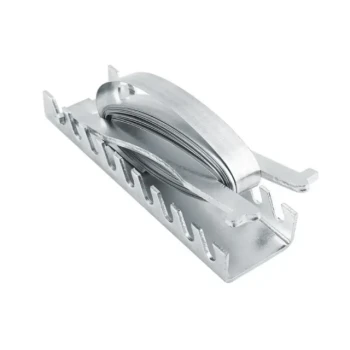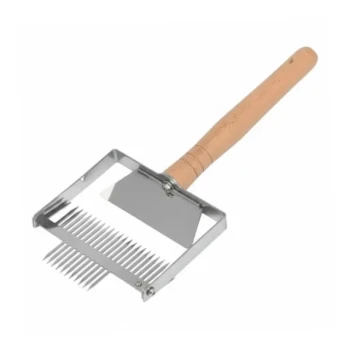Without question, the Varroa destructor mite is the single most destructive pest affecting Western honey bees (Apis mellifera) today. Originally a parasite of the Asian honey bee, this mite shifted hosts when European bees were introduced to Asia, and its global spread has fundamentally changed the practice of beekeeping. Its impact is devastating not just because it physically weakens bees, but because it simultaneously acts as a potent vector for a suite of deadly viruses.
The core threat of Varroa is not simply its parasitic nature, but its role as a viral amplifier. The mite's feeding action bypasses the bee's natural defenses, injecting viruses like Deformed Wing Virus directly into the bloodstream and turning a manageable infection into a lethal one that can collapse an entire colony.
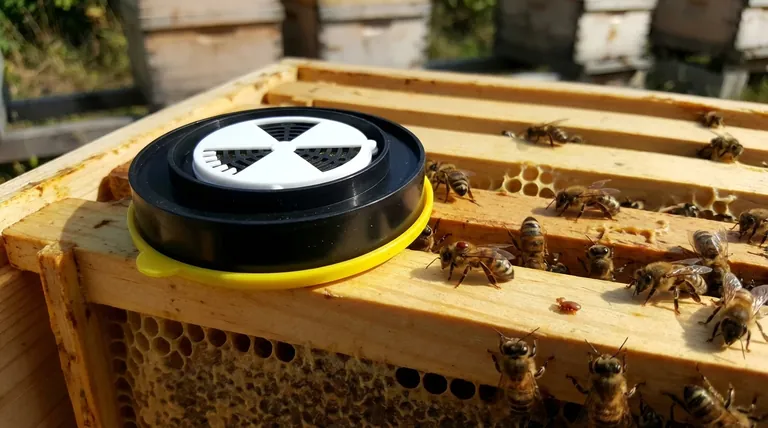
The Dual Threat: A Parasite and a Vector
To understand the scale of the Varroa problem, you must see it as two interconnected crises happening at once: a direct physical attack and an indirect biological one.
The Shift to a Vulnerable Host
The Asian honey bee (Apis cerana) co-evolved with Varroa and has developed natural defenses, such as grooming behaviors that remove mites. Western honey bees, however, have no such evolutionary history with the pest and are almost completely defenseless, making them a highly vulnerable host.
Direct Damage: Feeding on the Bee's "Liver"
The mite latches onto adult bees and developing brood, feeding on their fat body tissue. This organ is critical, functioning much like a human liver. It manages the bee's immune response, detoxifies pesticides, and stores essential nutrients. Mite feeding degrades this tissue, resulting in a weakened, malnourished bee with a severely compromised immune system and a shorter lifespan.
Indirect Damage: The Viral Amplifier
This is the mite's most destructive function. While viruses like Deformed Wing Virus (DWV) can exist in a colony at low, relatively harmless levels, Varroa changes the equation entirely. When a mite feeds, it transmits the virus directly into the bee’s hemolymph (blood), effectively acting as a "dirty needle." This method of transmission makes the virus exponentially more virulent, leading to the classic symptoms of shrunken, useless wings and causing premature death.
The Cascade of Colony Collapse
The impact of a high Varroa and viral load is not linear; it creates a domino effect that causes a colony's health to rapidly deteriorate.
Weakened Individual Bees
An individual bee parasitized by Varroa is fundamentally compromised. It will have a shorter life, reduced navigational and foraging ability, and a greater susceptibility to other environmental stressors.
Compromised Colony Health
As the number of weakened bees increases, the colony's entire social structure begins to fail. There are fewer healthy foragers to bring in nectar and pollen, and fewer healthy nurse bees to care for the brood. This leads to shrinking food stores and poor nutrition, creating a vicious cycle of decline.
The Overwintering Crisis
A Varroa-infested colony may appear relatively healthy in the summer when the population is large. However, the true damage becomes apparent in the fall and winter. The colony enters the cold months with a population of weak, virus-infected bees that do not live long enough to sustain the cluster, leading to a collapse before spring. This is the primary driver of the high annual colony losses reported by beekeepers worldwide.
Common Pitfalls to Avoid
Managing Varroa is now a non-negotiable aspect of beekeeping, but it comes with its own set of challenges that can trap unprepared beekeepers.
The Problem of Mite Resistance
Because mites reproduce so quickly, they can rapidly develop genetic resistance to the chemical treatments (miticides) used to control them. Relying on a single treatment method year after year is a recipe for failure.
The Risk of Re-infestation
Even a perfectly treated apiary is not an island. Mites can easily spread from nearby untreated or collapsing colonies as bees from different hives interact or "rob" honey from weaker neighbors. This makes Varroa a community-wide issue.
The Flaw of Passive Observation
You cannot manage what you do not measure. Simply looking for mites on bees is an extremely unreliable way to assess the threat. By the time mites are easily visible, the infestation level is often already critical and irreversible for that season.
Making the Right Choice for Your Goal
Effective Varroa management has become synonymous with responsible beekeeping. Your strategy should be dictated by your primary objective.
- If your primary focus is immediate colony survival: You must learn to perform systematic mite counts (using an alcohol wash or sugar roll) and treat based on established infestation thresholds.
- If your primary focus is long-term sustainability: Implement an Integrated Pest Management (IPM) plan that rotates different types of treatments and incorporates non-chemical control methods to fight resistance.
- If your primary focus is the health of the broader bee population: Recognize that your hives impact your neighbors, and advocate for community-level awareness and coordinated management efforts.
Ultimately, managing Varroa destructor is no longer an optional task; it is a core skill required to give your bees a chance to thrive.
Summary Table:
| Impact Aspect | Key Consequence |
|---|---|
| Direct Parasitism | Weakens bees by feeding on fat body tissue, shortening lifespan. |
| Viral Amplification | Transmits deadly viruses like Deformed Wing Virus directly into bee bloodstream. |
| Colony Health | Leads to rapid population decline and frequent overwintering collapse. |
| Beekeeping Practice | Makes systematic mite monitoring and Integrated Pest Management (IPM) essential. |
Protect Your Apiary with Professional-Grade Solutions
Varroa destructor poses a constant, severe threat to the health of your colonies and the productivity of your operation. HONESTBEE understands the critical challenges faced by commercial apiaries and beekeeping equipment distributors. We supply the durable, effective tools you need to implement a successful Integrated Pest Management (IPM) plan, from mite monitoring equipment to treatment solutions.
Don't let mites dictate your season's success. Contact our expert team today to discuss wholesale supplies tailored to your commercial needs and strengthen your defense against Varroa.
Get in Touch for a Consultation
Visual Guide
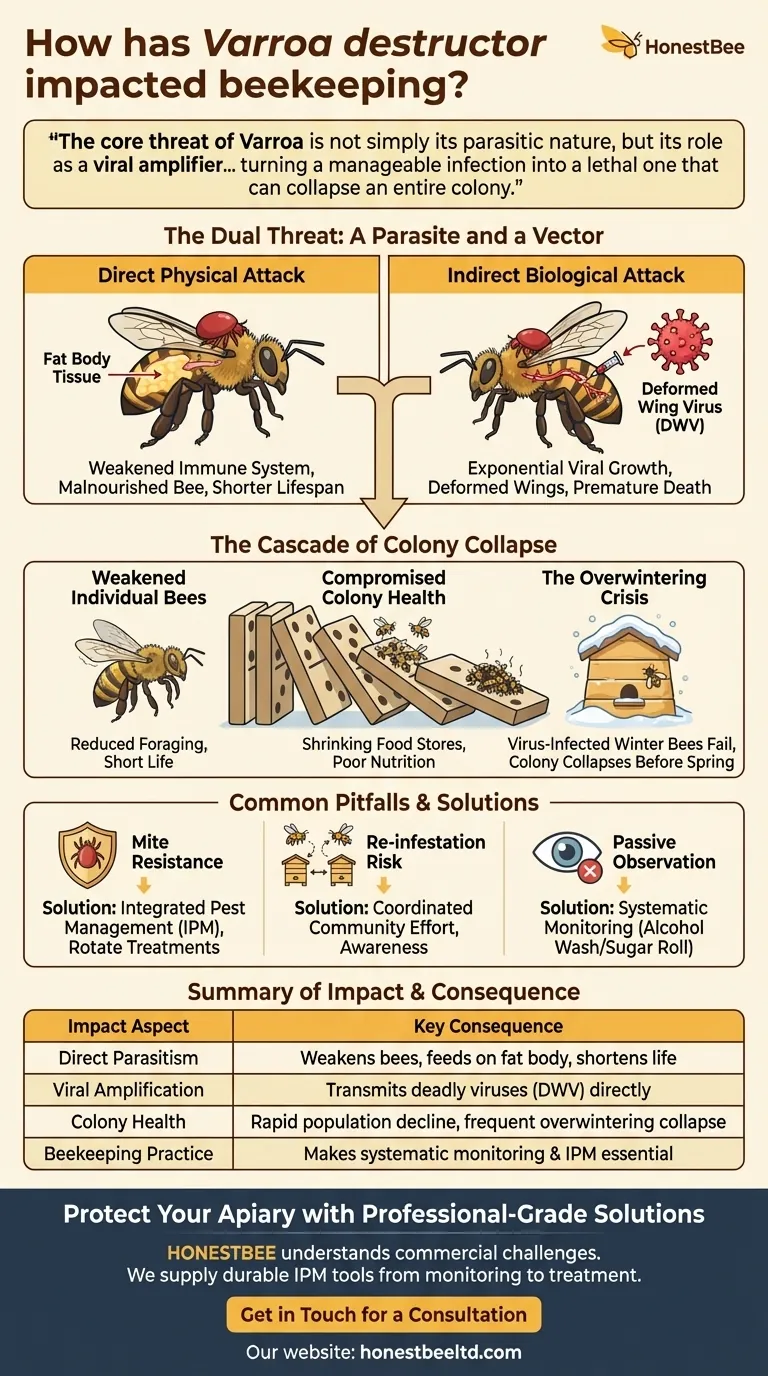
Related Products
- Adjustable Formic and Acetic Acid Dispenser for Bee Mite Treatment
- Varroa Easy Check Mite Tester Kit Counter Alcohol Wash Jar
- Economy Galvanized Beekeeping Honey Bee Smoker for Wholesale
- Professional Bee Smoker with Elongated Spout and Durable Bellows for Beekeeping
- Professional Insulated Winter Hive Wrap for Beekeeping
People Also Ask
- What is the focus of hive management during summer? Maximize Your Honey Harvest with Expert Tips
- What are the symptoms of Varroa Mite Syndrome (VMS)? Recognizing the Signs of Colony Collapse
- How do Varroa mites spread between honey bee colonies? Stop Mite Transmission in Your Apiary
- What is the optimal time for varroa mite control in nucs? Maximize Efficacy with Perfect Timing
- What does Chewed Down Brood (CDB) indicate in bee colonies? A Sign of Varroa Mite Infestation











